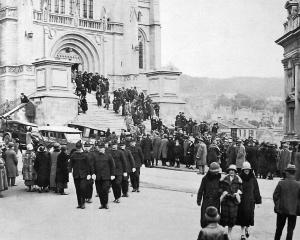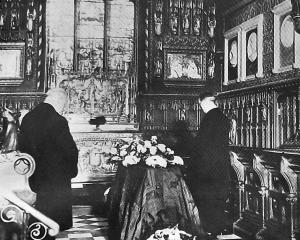
July 11: Probably never within the walls of the Now Zealand Parliament House have members listened to such an eloquent address as that which was delivered by Mr Sastri, the Indian visitor, at the luncheon arranged by the Government in his honour today. With a charming voice, and in choice and correct English, the delegate from the Parliament of India unfolded his far-seeing vision of Empire. He disclosed himself not only as an orator but also as a man of high ideals. From his humourous opening sentence to his final exhortation he held his audience spellbound. India expected a large Empire parliamentary delegation to visit the Indian capital and see India’s legislature at work early next year.
He hoped that as many members as possible of the New Zealand Parliament would join that delegation and see the youngest parliament of the Empire at work. "I am not here to fill your minds with any alarm or suspicion, but only to ask you to help me at an early date to furnish these pessimistic friends of mine in India with proofs that where lawfully domiciled within the Empire, Indians will be treated as equal citizens of the Empire. (Applause.) That is a necessary condition to India loyally remaining within the Empire."
Logan Park envisaged
A meeting of the executive of the Amenities and Town Planning Society was held yesterday afternoon, Mr A. Bathgate presiding. The Chairman, in explaining his views as to what should be done at Lake Logan, said tree planting would not lessen the area for play, and the Harbour Board would have an area that it could lease. It would be pleasing to look out at a spacious green park.
The idea was to get the area as a public park. Mr J. Begg expressed the opinion that a scheme to get hold of 60 acres as a public park was what should be aimed at; this would be enough to go on with. The Chairman, speaking of the lease, said it should not be for less than 33 years, and should be at a moderate rent. At the end of that period the people of Dunedin would appreciate the park so much that no matter what it cost they would acquire the whole thing. If it were once a park it would never be anything else.
Watch out for counterfeit coins
Counterfeit half-crowns and florins are in circulation to a small extent in Auckland (states our own correspondent). Their pretence was first noted about three months ago, since when the banks have been keeping watch on coins of these denominations. In one bank the number of "bad" coins detected averages about six daily. An exact imitation of details and a remarkably true ring characterise the spurious coins. Some bank officials describe them as the best looking counterfeit silver coins placed in circulation in New Zealand. They are probably the work of a counterfeiting plant in another country, as it is considered doubtful that an imitation of such good quality could be manufactured in New Zealand. The half-crowns are dated 1921 and the florins 1919. The coins evidently contain a small proportion of silver, as their ring is very little different from the latest demonetised silver coins. It is this fact that makes comparison difficult. They are, however, slightly lighter than the genuine coins, and the metal is slightly coarser and less smooth than good coins.
— ODT, 12.7.1922












